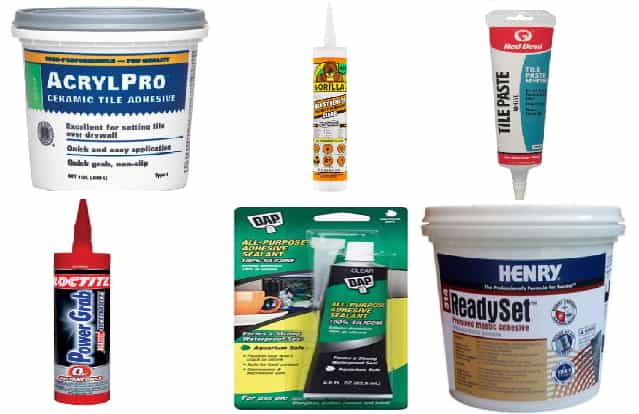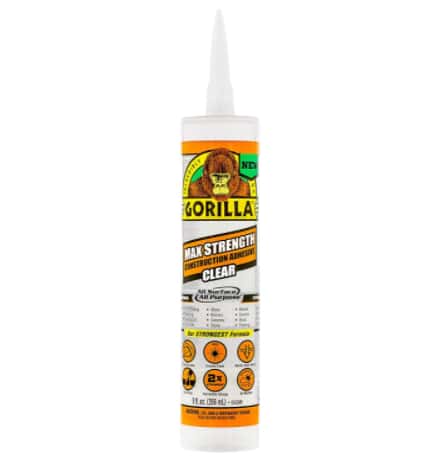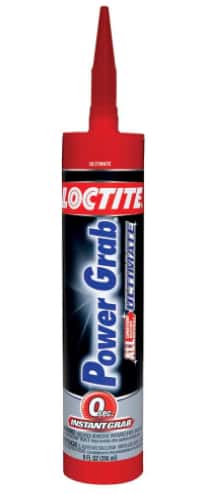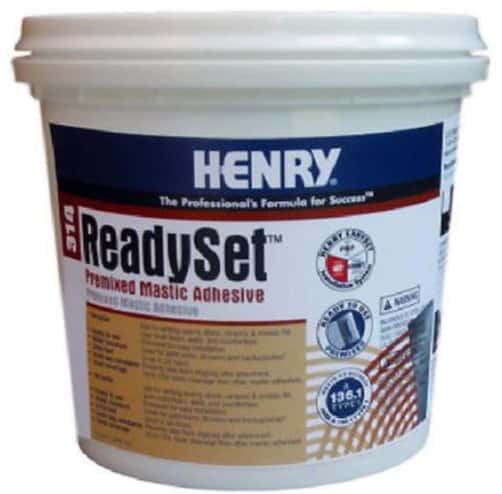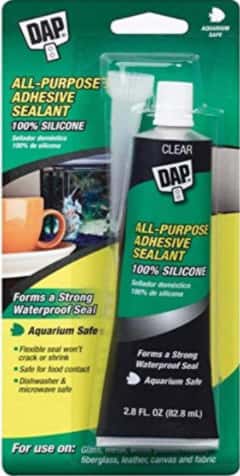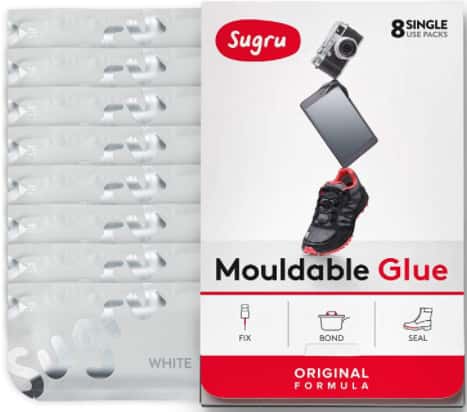7 best adhesives for ceramic you shouldn’t miss!
Ceramics nowadays have taken a significant part in art and creation. From flooring, kitchen items to decorative items, ceramics are involved everywhere. Though they are made reasonably durable, still it can break or crack due to several effects. That’s why we are reviewing best adhesive for ceramic.
Ceramic tile adhesive are the best means to mend the damaged ceramics. Ceramics are easy to break, especially you are using them for heavy purposes. But you don’t necessarily have to throw them out.
Here, you will see the best adhesive for ceramic tile, soap dish, and find the most effective buying guide to help you out.
1. Acryl pro ceramic tile adhesive
Composition
This product comes with a proprietary blend of inorganic materials, calcium carbonate, and acrylic copolymers.
Professional Formula
Acryl pro ceramic tile adhesive comes with a standard formula with high bond strengths. It is usually used with mosaic, stone tile, porcelain, and small format ceramic. We recommend using this adhesive in areas with less water exposure, as the shower walls or the tub surrounds.
Appropriate Tiles Length
Usually, the manufacturers recommend using the product for tile up to 8 inches on any side. However, you can use it with tile up to 25 inches, although the dry time will increase. If a tile has a size greater than 15 inches, you can use a cement mortar (polymer modified). Well, you have to check if it is designed for large format tile.
Pros:
- It doesn’t take bond directly to metal, hardwood, fiberglass, particleboard, or plastic.
- You can use it for the interior only.
2. Best adhesive for ceramic soap dish
Strongest Construction
It is a perfect combo of versatility and strength. Of all the Gorilla adhesives, this product has the most robust construction adhesive formula. You can say it’s twice more potent than the heavy-duty Gorilla adhesive.
Adhesive for Ceramic Easy to Use
Using it is relatively easy. People with any experience level can use it. They just have to know few things. Before using the product, you must make sure if the surface is clean. It would be best if you use it above 40℉. Now cut the nozzle at an angle of 45-degree to get the desired bead size.
Specs to Know
Gorilla Max Strength comes with a crystal clear, non-foaming formula. You can use it both indoor and outdoor. The best temperature to apply the adhesive is 40℉. And the service temperature is -40° to 212° F. It is sand-able but not stainable. Moreover, the product meets the ASTM D3498, ASTM C557, and APA AFG-01 specifications.
Pros:
- It is entirely waterproof and can work underwater.
- Suitable for all weather situations
- It can bond any surface, including wood, ceramic, concrete, tile, and many more.
- More potent than other products of the same brand
- The result will give a professional look, and it looks as close as perfect.
Cons:
- Heavy items might need temporary support.
- It might not work underwater as well as you would expect.
3. Red Devil 0497 Tile Paste Adhesive
Application
This acrylic-based adhesive effectively bonds many types of wall tiles and floor. You can use it for installing and repairing linoleum, plastic and ceramic tile, and mosaic. It adheres to metal, plastic, ceramic, rubber, vinyl, and linoleum.
The perfect paste consistency of the product makes it easy to apply. Troweling is not needed.
Mildew Resistant
You don’t want your place mildewed. It looks terrible on the walls as well as causes health issues. The robust construction of the product ensures no mildew. It doesn’t let any mildew grow.
Dries White
If you have any loose tiles, you can get them back in position in a few minutes. Apply the adhesive, let it dry overnight, and ta-da! The tiles won’t move anymore. You will be proud of your handy fix!
In this case, the only issue you might face is that this product’s brightness might surpass the older adhesives on the tile.
Pros:
- This excellent product can work with most of the tile types
- It prevents discoloring of the tiles and has minimal odor
- You can easily clean it with water and soap
- You can use it both outdoors and indoors
- Setting requires around 30 minutes
Cons:
- It lasts for a few weeks only
4. Henkel Corporation Con Adhesive with utmost compatibility
Compatible level & GREENGUARD certification
It’s a ceramic adhesive that allows you to use wood, porcelain, plastic, fiberglass, and metal. The adhesive will effectively work on every mentioned medium. The nine fluid-ounces volume is enough for household jobs.
To be more specific, the certification allows you to use the glue on concrete, tile, ceramic, granite, brick, aluminum, masonry, porcelain, stainless steel, metal, drywall, wood, PVC, plaster, laminate, and fiberglass.
All-weather effect
Other than more than one medium, the adhesive formulae allow you more than one weather also. That means you can use the stuff on any weather and any mentioned surfaces. The temperature range is noticeably wide, and it’s 40 to 140-degree Fahrenheit. You can apply on both exterior and interior stuff.
Interval to reposition
You will have 10-minutes to reposition the glue if any unwanted scene takes place. The output will be white after drying.
Pros:
- You have a wide range of materials to apply with this glue.
- The suitable temperature is pretty broad in the range.
- The repositioning interval won’t make you wait too much while giving you the standard time to eliminate the error.
- The material will work in all conditions and all-weather.
Cons:
- The product isn’t for marine applications. Don’t even use it on spots permanently immersed in water.
5. Henry 314 Premixed Mastic Adhesive 1 QT Ready Set
Applications
It is an installer-grade adhesive used to install ceramic tiles on countertops, walls, floors, and shower enclosures. The setting of mosaic tiles, quarry stone, porcelain, and ceramic is quick and efficient.
Bonds to
It bonds quarry tile and ceramic, mosaic tile, 6” x 6” or smaller. Moreover, it bonds to brick, wood substrates, plaster, concrete block, concrete, underlayments, gypsum drywall, and ceramic tile on all grade levels. You must scour the glazed ceramic tile adhesive and glossy painted surfaces.
Specifications
The product has a dimension of 5 x 5 x 4.75 inches, and it weighs 8 ounces. It dries out within 24 hours. You can use this product on floors and walls, and it’s an indoor product. The chemical makeup is water-based.
Pros:
- It is an easy to use and durable product.
- It dries out quickly and gives a professional look.
- Application is straightforward and easy as it sets and spreads well.
- It meets the ASTM 136.1 standard.
- It has a wide range of applications.
Cons:
- You can’t expect an extraordinary result from it.
6.DAP all-purpose sealant with 100% silicone, tube
Unbreakable feature
The waterproof & watertight seal gives the most crack-resistant & unshrinking result. You are free to use this one for navigational purposes. Once the adhesive dries, it becomes harmless for salt & freshwater fish.
Marine purpose
Are you looking for something waterproof for your aquariums? This one has all you need. The 100% silicon rubber will seal the spaces. It’s flexible enough, long-lasting, non-toxic to your water creatures.
Pros:
- It’s a perfect waterproof adhesive.
- Allows you to work on water-immersed objects
- 100% silicon gives excellent flexibility and a watertight seal.
- Non-toxic for your water creatures
- It has stable & un-shrinkable features.
Cons:
- It might affect less on high-temperature heating elements.
7. Sugru Moldable Glue
Mess-Free Repairs
This award-winning product is the perfect one to fix your DIY projects. You can control it easily. It is not like other liquid glues that drip all over the place. And thus, it’s a mess-free task!
The application is straightforward. You have to mold it, stick it to the place you need it, and your job is done! It turns into a flexible and robust silicon rubber and sets firmly.
Applications
With its innovative formula, it has a wide range of applications. You can rebuild, re-attach or replace any broken object. Not only broken objects, but you can use it to patch up cracks also. Moreover, you can patch clothes and shoes. When it comes to any cable or cord, you can fix and reinforce it (up to 24V). Most importantly, you can use it for arts and crafts.
Pros:
- It doesn’t come with any runny formula.
- The product is excellent for sealing, mounting, fixing, reinforcing, DIY projects, home improvement, electrical repairs, and many more.
- It is powerful and can hold up to 2 kg on metal, wood, glass, ceramics, plastics, and plaster.
- It is durable, heat and cold resistant, removable and waterproof.
- The application is quick and easy.
Cons:
- Once you open the package, you have to use all of the products.
- Expensive. Heavier than you might expect.
Buying Guide: Best adhesive for ceramic
Like any other product, adhesives also have their factors to consider. Even more, if you are professional. Adhesives have their own space to react. You better not think glues will attach every kind of stuff. Epoxies & cyanoacrylate-based glues are best for your fine ceramic stuff like pottery & knickknacks.
The type to choose:
There are endless adhesive formulae you will witness once you run an errand on the market. The most two commons are super glue & epoxy.
By formulae, super glues create strong bonds than the glues by using the cyanide-derived cyanoacrylate. It tends to dry down within seconds; you even don’t get the chance to mix a second medium with it.
Ceramics having lightweight and thin spaces to attach, don’t need anything more than these super glues. It also works excellently while putting the broken pieces back into place.
Coming to epoxy, it takes more time to dry than the super glue. There are both resin and hardener in the formulae. Both of them are necessary for creating an unbreakable bond on ceramics. For being the most durable and perfect for shallow cracks, you can forget the hassle it causes while drying, I mean taking more time.
Now the question is, which one is for you? Both types are for daily products; we have to choose any one depending on the crack type. For mending a non-porous ceramic exterior, wisely choose an epoxy.
Container’s Shape:
While talking about the shape, I’m not concerned about the amount but the container type. You can choose the quantity depending on the availability. But if you are ignoring the shape, you are missing a great deal.
The container’s shape doesn’t interfere with the product’s quality, but it does reduce half of your hard work. It’s all about convenience.
Some come with a nozzle, while others come with a brush. Brush lets you control the thickness of glue you apply. It’s a fact of preference, so choose as you like. But don’t go for something causing excess dripping. You might already know the result of having something out of control.
The opacity of your glue:
This part is nothing much of a bother if you are applying the glue on some hidden surface. But it’s a significant point if you care about the appearance. Some glues are transparent, while others give different colors when they dry. If you are using it as a filler on your ceramic scratches, match the glue color with your product.
Epoxies often work as gap-filler as it comes in different colors. You can even sand and paint your used epoxies after drying. If you are targeting a large gap, look for epoxy putty. It will reduce half of your hassle.
Time to dry:
I have described it on the very first. Epoxy takes more time than the super glues. However, depending on your product, the time will differ, and look for them on the product label. You can wait for hours if you want something substantial from epoxy. Otherwise, go for the other option!
Solvent-resisting feature:
What if the ceramic is your washroom’s tile or something often exposed to water and moisture? Isn’t it evident that the glue will wash away? Now it has become essential to look for something waterproof, isn’t it?
Fortunately, these days, almost all the adhesives out there tend to be waterproof, and you just need to ensure it on your label. Usually, epoxies can and cannot be waterproof, but as I said, it’s easy to find the waterproof one nowadays.
Super-glues are water-resistant resisting dishwashing and other regular washes. Sometimes it may fail depending on the amount and quality you used.
So, give a check whether your stuff is waterproof or water-resistant. Nonwaterproof glue won’t be able to hold your ceramic on the splash of water.
Food Safety:
Ensuring the ceramic glue being safe for your food is the other thing to consider. I once used glue while not caring much about this factor, and guess what! I can’t keep the ceramic anymore due to the foul odor. It smelled too bad for a long time. I still don’t get why but it was horrible.
We want something with a strong chemical to create a strong bond on the ceramics, but if we want it to be in our kitchen, we better choose them food safe.
Being food safe is more important if you use the glue on the ceramic that displays your food.
How to know it’s safe? FDA approval mark is the proof, and you must search it on the label. It’s the only safest way to follow and keep your loved ones safe.
Other Accessories:
Your product may come with additional accessories for your convenience. Tools like a spatula, paint scrapper, attaching accessories, or other stuff helping you with the application. Multiple tops, nozzles, syringes are of many help at times.
One essential tool that your glues don’t bring with them is the tarp. You need to place your ceramic over the tarp to prevent another surface from damaging.
What are the benefits?
We don’t use adhesives on undamaged ceramics to enhance beauty or anything like that. So, no benefit to that. If you are talking about broken parts, there is no other practical way to repair your broken ceramics. But adhesives work best that you don’t have to throw damaged ceramics away.
Nowadays, artists are always trying to create something new, and there is a trend of creating something special out of broken stuff. They as well make the best use of such adhesives to showcase their creativity.
Signs your adhesive should show:
This part might sound confusing but let’s be fair. Your adhesive shouldn’t show any sign at an extreme level.
That means too much thickness will not allow the glue to spread, whereas too much thin texture will create a mess instead of remaining prominent.
In a word, the texture shouldn’t be too thick or too thin. It should dry quickly but not within mini or micro-seconds. At least, you need to few minutes to work on it.
Other than the above features, what you need has been discussed above. Check the label for water, heat, and solvent-resistant while food and oven safe.
Now, the reality is, you will not find every feature on one adhesive. So, be wise to choose according to your preferences.
How to glue?
Let’s put the outline for mending a broken ceramic.
- Collect a huge container filled with pebbles, sand, or rice. In this way, your ceramic will get a standard surface to sit on.
- Dust hindrance the chemical bond, so you need to wipe away the dust on the broken pieces. Use rubbing alcohol for the job. Focus primarily on the broken edges to make them dust-free.
- Take your epoxy and apply a thin layer on one broken piece and connect it to the other ceramic piece. Don’t apply the epoxy on both broken pieces, or else it will create a mess.
- Be quick! The adhesives will take a few seconds to a minute to dry, so don’t keep rooms for mistakes.
- The slightest temperature of 75-degrees helps the adhesive to sit down properly.
- Sometimes, you don’t need anything else to hold the pieces together while the adhesive dries up. But if your pieces are falling apart, use pottery clay till the adhesive dries up.
- Be mindful to keep your skin out of contact with the adhesives.
FAQ:
1. Can I paint over super glue?
- You can and can’t. It’s a feature that all super glues don’t have. However, the one made for ceramics can be painted & sanded as you need. You better check the label while buying or see what’s the manufacturer is claiming.
2. What’s the best adhesive for tile?
- You are to look for the features that I mentioned in the buying guide. But I said, you can’t have all the privileges on one glue, so choose according to your work.
As for ceramic tile, focus on the bond strength it can provide to your tile and the amount of pressure it can handle. If the tile belongs to your washroom, add the waterproof feature. In this case, your adhesive doesn’t have to be food safe.
3. Is there any adhesive that is water, & solvent-proof, oven, & food safe, and chemical resistant at the same time?
- Unfortunately, no! From my experience, you will witness a hell while matching half of your demand in one product. Moreover, you have to deal with the quality and the authenticity of what they claim. So, pick a good one depending on your exact application.
Final Verdict:
Finally, you get the proper knowledge about the best adhesive for ceramic and ceramic tile adhesive. After knowing all the exciting glue on the market and online from the list, I hope the buying guide will help you. Usually, I like to give my best pick lists, but in this case, it won’t help you much. Your best pick will be according to your need.
However, don’t forget to take the safety measures. The products are strong enough to burn your skin.
